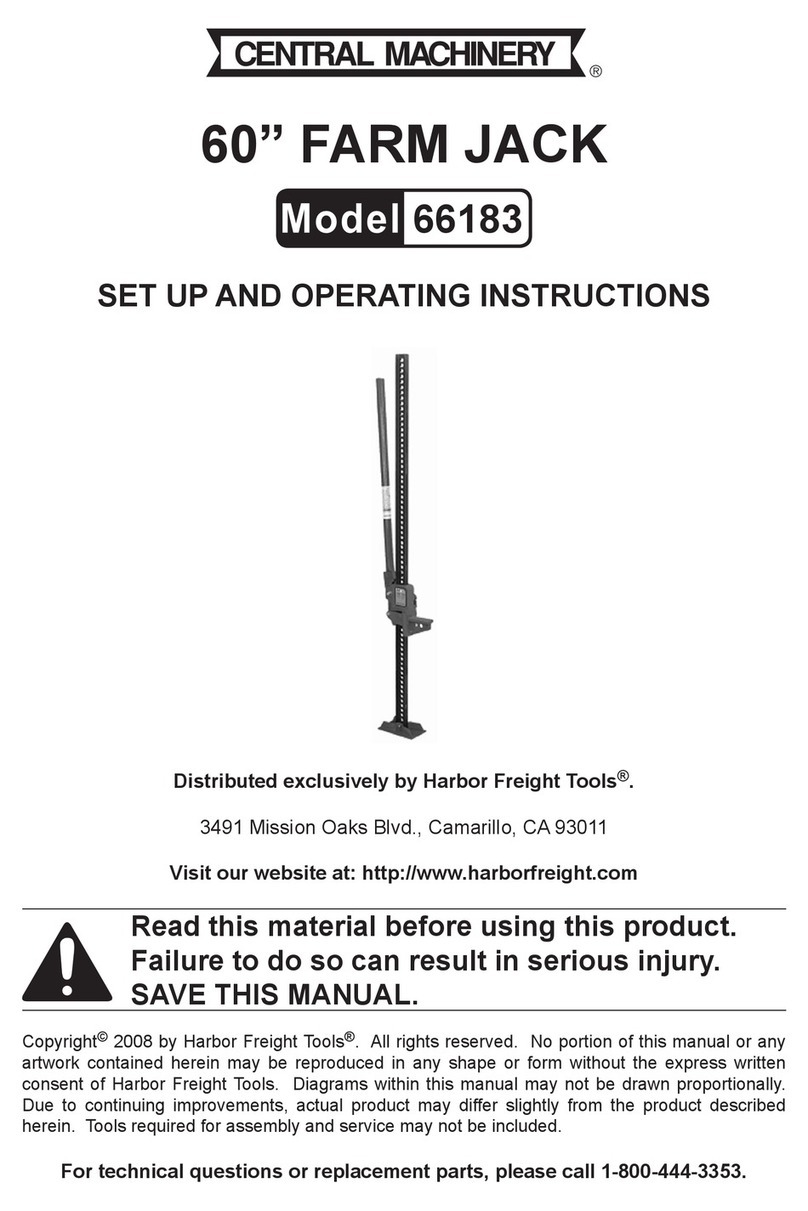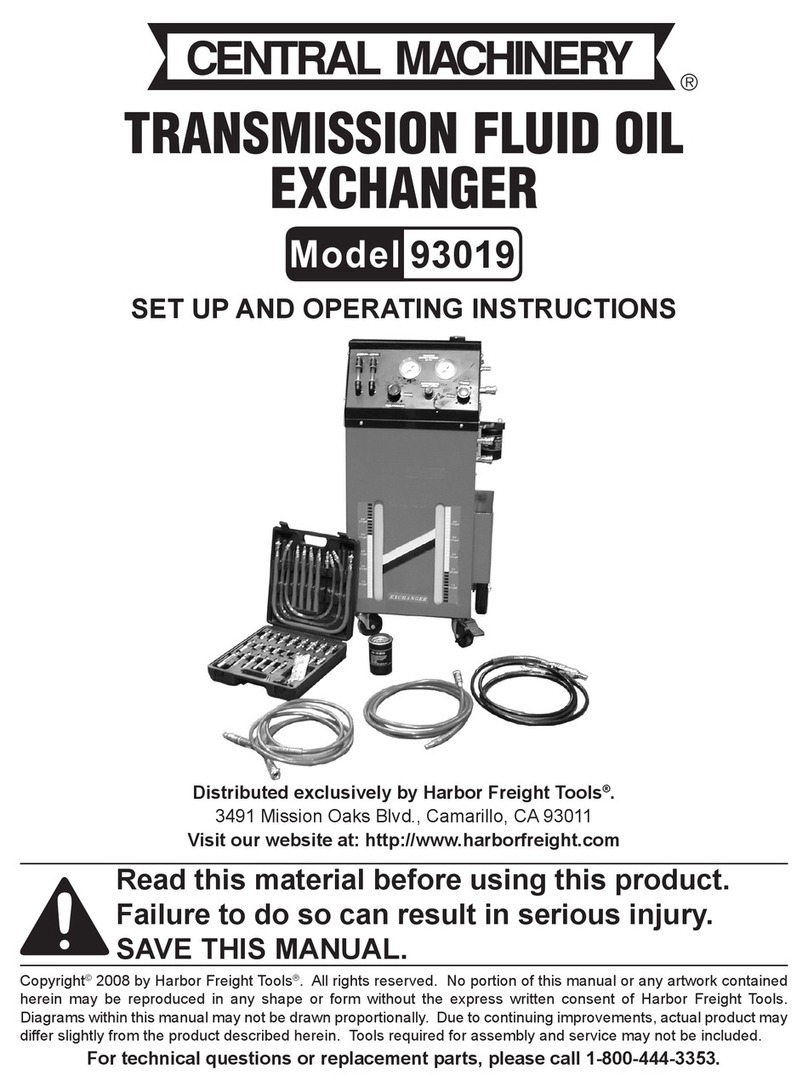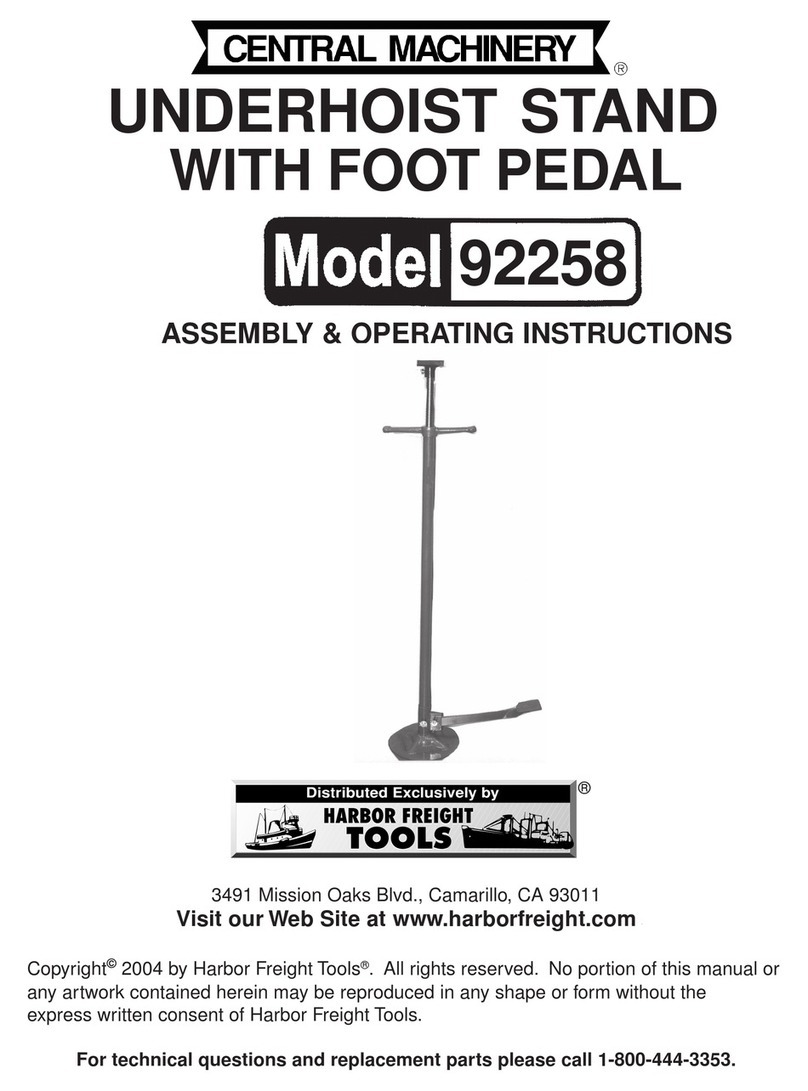
Page 3
SKU 92923 For technical questions, please call 1-800-444-3353
5. Use the right tool for the job. Do not attempt to force a small tool or attachment to
do the work of a larger industrial tool. There are certain applications for which this
tool was designed. It will do the job better and more safely at the rate for which it was
intended. Do not modify this tool and do not use this tool for a purpose for which it
was not intended.
6. Dress properly. Do not wear loose clothing or jewelry as they can be caught in
moving parts. Protective, electrically nonconductive clothes and nonskid footwear are
recommended when working. Wear restrictive hair covering to contain long hair.
7. Use eye and ear protection. Always wear ANSI approved impact safety goggles.
Wear an ANSI approved dust mask or respirator when working around chemical dusts
and mists.
8. Do not overreach. Keep proper footing and balance at all times. Do not reach over or
across running machines.
9. Maintain tools with care. Inspect tool cords and hoses periodically and, if damaged,
have them replaced, or repaired by an authorized technician. The handles must be
kept clean, dry, and free from oil and grease at all times.
10. Remove adjusting keys and wrenches. Check that keys and adjusting wrenches
are removed from the tool or machine work surface before operating.
11. Avoid unintentional starting. Be sure the air pressure is in the Off position when not
in use and before making hose connections.
12. Stay alert. Watch what you are doing, use common sense. Do not operate any tool
when you are tired.
13. Check for damaged parts. Before using any tool, any part that appears damaged
should be carefully checked to determine that it will operate properly and perform its
intended function. Check for alignment and binding of moving parts; any broken parts
or mounting fixtures; and any other condition that may affect proper operation. Any
part that is damaged should be properly repaired or replaced by a qualified technician.
Do not use the tool if any control or switch does operate properly.
14. Replacement parts and accessories. When servicing, use only identical
replacement parts. Use of any other parts will void the warranty. Only use accessories
intended for use with this tool. Approved accessories are available from Harbor Freight
Tools.
15. Do not operate tool if under the influence of alcohol or drugs. Read warning
labels if taking prescription medicine to determine if your judgment or reflexes are
impaired while taking drugs. If there is any doubt, do not operate the tool.
16. Pacemaker safety warning. People with pacemakers should consult their
physician(s) before using this product. Electromagnetic fields in close proximity to a
heart pacemaker could cause interference to, or failure of the pacemaker. In addition,
people with pacemakers should adhere to the following:
- Caution is necessary when near the coil, spark plug cables, or distributor of a
running engine. The engine should always be off if adjustments are to be made to the
distributor.
Brought to You by www.snapwhole.com






























